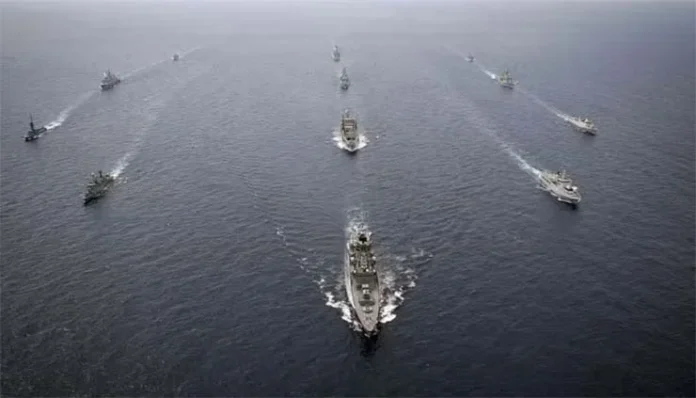New Delhi: The Royal Australian Navy will have its largest fleet since the end of World War II if it implements recommendations from a new independent review of its surface combat ships.
The government’s “Enhanced Lethality Surface Combatant Fleet” review, released February 20, advocates for a flotilla of 26 warships, more than double the 11 hulls the service currently possesses. The government has accepted the recommendations except for one regarding the continuation of an upgrade for aging Anzac-class frigates.
“The size, lethality and capabilities of the future surface combatant fleet ensures that our Navy is equipped to meet the evolving strategic challenges of our region,” Chief of Navy Vice Admiral Mark Hammond said in a statement following the report’s unveiling.
Jennifer Parker, an expert associate at the National Security College within the Australian National University, said the force could achieve its new goal, even if “plans of this magnitude are going to have challenges.”
According to the plan, the Australian Navy in order to supplement its forthcoming nuclear-powered submarines, to be acquired under the AUKUS agreement with the UK and US, the future surface combatant fleet will feature nine so-called tier 1 destroyers and frigates, 11 smaller tier 2 frigates, and six optionally manned vessels.
Tier 1 vessels will comprise three existing Hobart-class air warfare destroyers — to receive an upgrade to the Aegis combat system and the installation of Tomahawk missiles — and six new Hunter-class anti-submarine frigates. BAE Systems was originally supposed to produce nine frigates, with the first to be commissioned in 2034. Australia plans to retire two Anzac-class frigates by 2026, leaving six in service until supplemented by the first new general-purpose frigate in 2030.
“Most predict an increased period of risk in the late 2020s, and that is where Australia has the capability gap,” Parker said, noting the service should consider how to maximize its remaining capability and operational availability during this time.
With this pending shortfall, the review recommended commissioning 11 general-purpose frigates at least the size of the Anzacs to “provide maritime and land strike, air defence and escort capabilities,” the government explained in a summary of the report.
Australia plans to procure the first three frigates from overseas, with the remainder constructed in Henderson, Western Australia. The Navy has narrowed contenders to Germany’s MEKO A-200, Japan’s Mogami class, South Korea’s FFX Batch II/III, and Spain’s Alfa 3000. The government will make a selection next year, with the first delivery scheduled in 2030.
Apart from surface combatants, the review proposed a fleet of 25 “minor war vessels” for constabulary tasks. These include six Arafura-class offshore patrol vessels, or OPV, slashed from the original 12 that Luerssen Australia is constructing.
“The OPV is an inefficient use of resources for civil maritime security operations and does not possess the survivability and self-defence systems to contribute to a surface combatant mission,” the review stated. The entire plan is “fully funded” thanks to an additional AU$11.1 billion (US $7.3 billion) allocated over the next decade, including AU$1.7 billion (US $1.1 billion) in the next four years.





